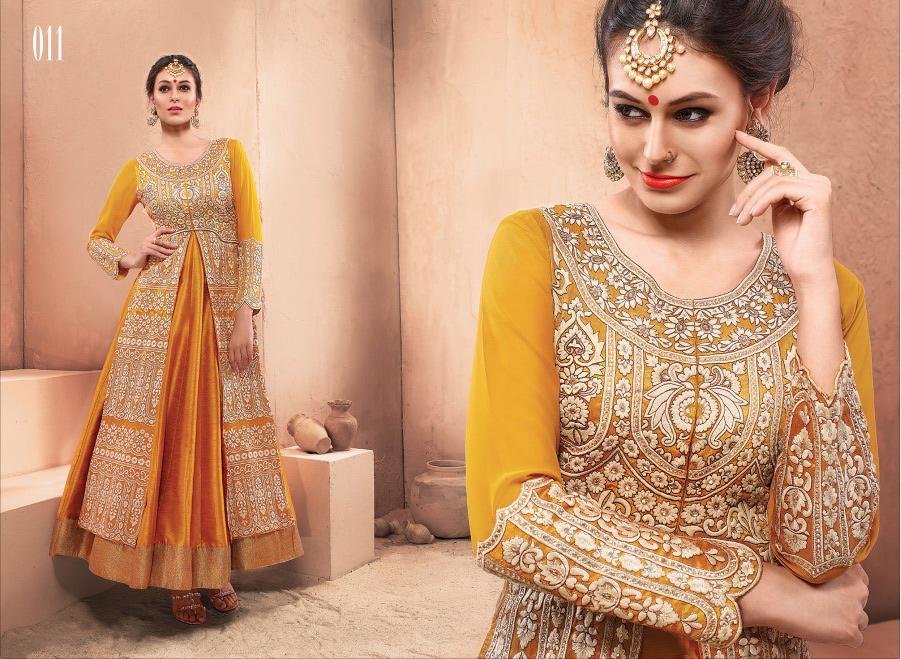From Indian to the World: How Suits Took Over 2025 Fashion
May 01, 2025

In the ever-evolving landscape of global fashion, 2025 has marked a striking return to formality — but with a twist. The resurgence of suits as the defining fashion statement of the year is not just about structure and sophistication. It’s a story of reinvention, cultural blending, and, notably, India’s growing influence on global fashion narratives. From Bollywood red carpets to the runways of Paris and New York, the Indian-inspired suit has become both a fashion statement and a symbol of cultural fusion.
Suits, once symbols of Western corporate uniformity, are now canvases for expression. In 2025, designers have reimagined the classic silhouette with bold fabrics, innovative tailoring, and cultural accents. What’s fascinating is that a major part of this transformation stems from Indian design philosophy — an amalgamation of tradition, texture, and textile art.
India’s influence on the global fashion scene has been simmering for years. The rich textile heritage, intricate embroidery, and diverse regional styles have attracted the eyes of global designers for decades. However, in 2025, Indian-inspired suits have moved beyond novelty and into mainstream global fashion.
The most prominent trend in this fusion movement is the Indo-Western suit. It merges the structured tailoring of the Western suit with the rich fabrics, vibrant colors, and ornamental detailing of Indian fashion. Think of bandhgalas with slim lapels, Nehru jackets paired with fitted trousers, and sherwanis reimagined in muted tones with minimalist cuts. These hybrids have become the go-to for fashion-conscious individuals around the world.
Designers like Sabyasachi Mukherjee and Manish Malhotra have collaborated with global brands like Dior and Balmain, creating limited-edition collections that blend Indian silhouettes with Western tailoring. These pieces aren’t just garments; they are cultural statements.
The global embrace of suits in 2025 cannot be discussed without acknowledging the Indian textile industry. From the soft sheen of Banarasi silk to the earthy richness of Khadi and the luxurious texture of handwoven brocades, Indian fabrics have found a new canvas in the suit.
International designers have increasingly sourced textiles from Indian artisans. LVMH and Gucci have established partnerships with Indian weavers to source ethically produced silk and cotton, signaling a shift toward sustainable and culturally respectful fashion. This has boosted rural economies while bringing authentic craftsmanship into the high-fashion spotlight.
In 2025, the suit is not just stitched in Italy or France — it is crafted from fabric spun in Varanasi, dyed in Jaipur, and embroidered in Lucknow. It’s a truly global garment with a deep Indian soul.
Another reason for the suit’s global dominance is its transformation into a gender-neutral garment. In 2025, fashion is less about categories and more about expression. Suits now transcend gender boundaries — women in sharp tuxedos, men in embroidered bandhgalas, and non-binary individuals donning androgynous silhouettes with flair.
Indian fashion has long celebrated fluidity through unisex garments like kurtas and dhotis, which has naturally aligned with the new wave of inclusive suiting. Brands like Bobo Calcutta, NorBlack NorWhite, and Bloni are pushing the boundaries of suiting, offering bold, colorful, and inclusive alternatives that challenge traditional ideas of masculine and feminine attire.
Bollywood has played a massive role in bringing Indian-inspired suits to global attention. In recent years, stars like Ranveer Singh, Deepika Padukone, and Alia Bhatt have graced international red carpets in Indo-Western suits, making headlines and redefining style.
In 2025, Deepika’s Met Gala look — a brocade jumpsuit with a trailing dupatta-style cape — sparked a global trend. Meanwhile, Ranveer Singh’s bold experimentation with floral bandhgalas and silk trousers has inspired a new generation of fashion-forward men to embrace color and pattern.
International celebrities, too, have caught the wave. Timothée Chalamet wore an embroidered Nehru jacket to the Cannes Film Festival. Zendaya walked the Oscars red carpet in a Sabyasachi fusion tuxedo featuring a zari-embroidered lapel. These moments underscore how Indian fashion is no longer an exotic outlier — it’s central to the global style conversation.
It might seem surprising that suits — once seen as symbols of office monotony — have roared back after the work-from-home era. But that’s exactly why they have.
After years in sweatpants and hoodies, people craved structure, intentional dressing, and personal flair. The suit, in its modern, expressive form, offered the perfect antidote. And unlike the pre-pandemic era, where suits were often drab and uniform, the new suits are anything but.
Post-pandemic fashion has embraced comfort and culture. Indian-inspired suits — with their looser fits, breathable fabrics, and vibrant detailing — hit that sweet spot between formality and freedom. They’re aspirational, but not restrictive. Sharp, but not stiff.
The 2025 fashion consumer is also more conscious. Fast fashion is out; storytelling is in. People want to wear clothes that carry meaning, history, and craftsmanship. Indian suits, often handmade and produced through centuries-old techniques, offer just that.
Wearing a suit made with handwoven Khadi or hand-dyed Bandhani isn’t just a fashion choice — it’s a statement of values. It reflects support for sustainable practices, artisan livelihoods, and cultural preservation.
Many brands have begun to include QR codes in their suits’ tags, allowing buyers to trace the garment’s journey — from the artisan’s loom to the store rack. These digital labels tell stories of heritage and process, transforming clothes into conversation pieces.
In 2025, the suit isn’t just back — it’s redefined. It’s more inclusive, expressive, and culturally rich than ever before. The Indian influence has been central to this transformation, reshaping how the world views tailoring, elegance, and identity.
From traditional weaving communities in India to the fashion capitals of Europe and America, the suit has become a garment of global dialogue. And it speaks volumes — about craftsmanship, sustainability, and a world increasingly open to cultural blending.
So, the next time you see a suit on a red carpet, in a boardroom, or on the street, take a closer look. Beneath the surface, you might find stories stitched with Indian threads — and a fashion revolution quietly unfolding.